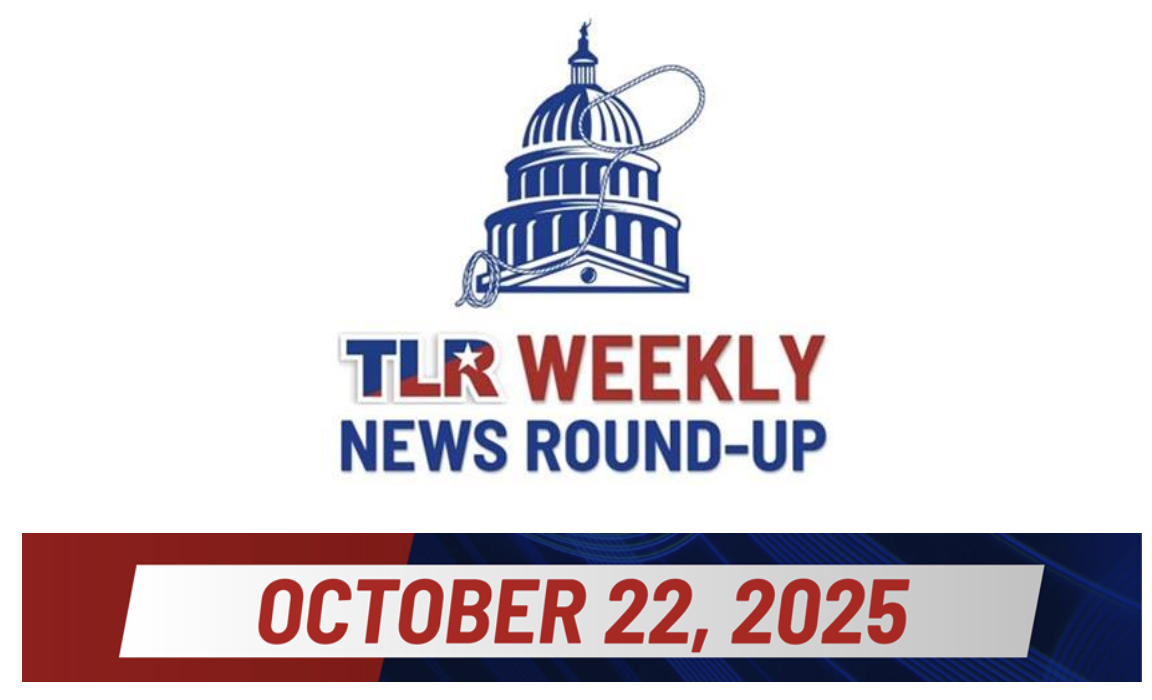
As courtroom chaos spreads across the country, investors and insurers alike are warning of the growing costs of lawsuit abuse. From “nuclear verdicts” driving up casualty premiums to Wall Street capital flooding into plaintiff-focused law firms, the pressure on our civil justice system continues to mount.
Texas has long been a national model for reform thanks to Texans for Lawsuit Reform’s work to build a fair, balanced, and predictable legal climate. But as other states unravel, new threats are emerging here at home, reminding us that the fight to protect Texas families, businesses, and taxpayers never ends.
This week, we’re watching two national developments that show how lawsuit abuse is changing the risk landscape—and why Texas must continue leading the way.
What Happened: Across the country, skyrocketing “nuclear verdicts” and secretive litigation funding are reshaping the casualty insurance market. After five years of double-digit premium increases, insurers and employers alike are struggling to manage unpredictable verdicts and runaway claim costs. In response, more companies are turning to group captives and self-insurance to regain control of their risk. Read More.
Tell Me More: Industry experts warn that the true driver of rising insurance costs isn’t just weather or inflation—it’s the growing role of outside funders influencing litigation from behind the scenes. Without clear disclosure rules, companies can’t know who’s financing the lawsuits against them, and juries don’t have the full picture of the interests pushing the litigation. The result is an uneven playing field that fuels uncertainty and higher prices for consumers and businesses alike.
By the Numbers: According to the Insurance Information Institute, nuclear verdicts, those exceeding $10 million, have increased 300% over the past decade. The result: higher premiums, steeper consumer costs, and fewer insurers willing to do business in states with unchecked lawsuit abuse.
TLR Thoughts: Texas reformed early, and it shows. But even as our state continues to attract jobs and investment, we can’t take that progress for granted. Litigation funding and social inflation are spreading fast, undermining the fairness and predictability that TLR’s reforms helped establish. Texas must stay vigilant, ensuring transparency in courtrooms and protecting businesses and families from a return to the “Wild West” days of jackpot justice.
What Happened: Major investment funds are pouring billions into Arizona’s “alternative business structure” (ABS) law firms—ventures that allow non-lawyers to own and profit from legal practices. Big players like Benefit Street Partners and Crossbeam Venture Partners are among the investors lining up to fund plaintiff-focused litigation operations. The model is attracting venture capital, hedge funds, and even private equity firms looking to capitalize on lawsuit proceeds. Read More.
Tell Me More: The shift marks a troubling new frontier: courtroom profits are now seen as a tradable asset. Litigation funders are experimenting with artificial intelligence to identify potential targets for lawsuits and streamline claims—an alarming development for anyone concerned about fairness in the justice system. While a handful of states have rejected this approach, others are following Arizona’s lead, putting corporate investors one step closer to owning the business of law.
By the Numbers: Litigation funding is now a $16.1 billion industry. Arizona has approved more than 150 non-lawyer-owned legal entities, with an 84% year-over-year increase in new approvals from 2023 to 2024.
TLR Thoughts: When outside investors see the courtroom as a profit center, everyday Americans pay the price. Texas has long prohibited this kind of law firm ownership, and rightly so. But as these models gain traction elsewhere, pressure will mount on other states to follow. TLR will continue working to keep Texas courts transparent, accountable, and free from the influence of outside capital.
That’s how much auto insurance premiums in Texas have risen over the past year, the steepest increase in at least a decade and more than double the national average.
Why does it matter? Because unchecked lawsuit abuse and “nuclear verdicts” are driving up costs for everyone. The top 100 jury awards in America have ballooned from an average of $64 million to $225 million in just six years.
Every inflated verdict or frivolous lawsuit adds pressure to Texas families’ budgets. TLR is working to stop lawsuit abuse before it fuels the next spike, keeping Texas affordable, competitive, and fair.
Thirty years ago, a small coalition of Texas business and community leaders came together to take on a growing problem: lawsuit abuse that was driving jobs out of the state and threatening our economy. From that moment, Texans for Lawsuit Reform was born.

Over the next three decades, TLR helped pass some of the nation’s most comprehensive lawsuit reforms, transforming Texas into a model of fairness, balance, and accountability. Those reforms built a foundation for Texas’s growth and made our courts among the most respected in the country.
But as “nuclear verdicts” and third-party litigation funding rise nationwide, the work isn’t finished. TLR’s mission today is the same as it was in 1994: to keep Texas courts predictable, transparent, and just, ensuring the state remains the best place to live, work, and build a business.
The forces driving up costs for consumers across the country today are the same threats that once held Texas back. Because of decades of reform, our state stands on stronger ground. But as new challenges emerge, vigilance matters more than ever.
Texans for Lawsuit Reform will continue leading the way, protecting fairness in our courts, defending families and businesses, and keeping Texas the gold standard for civil justice.